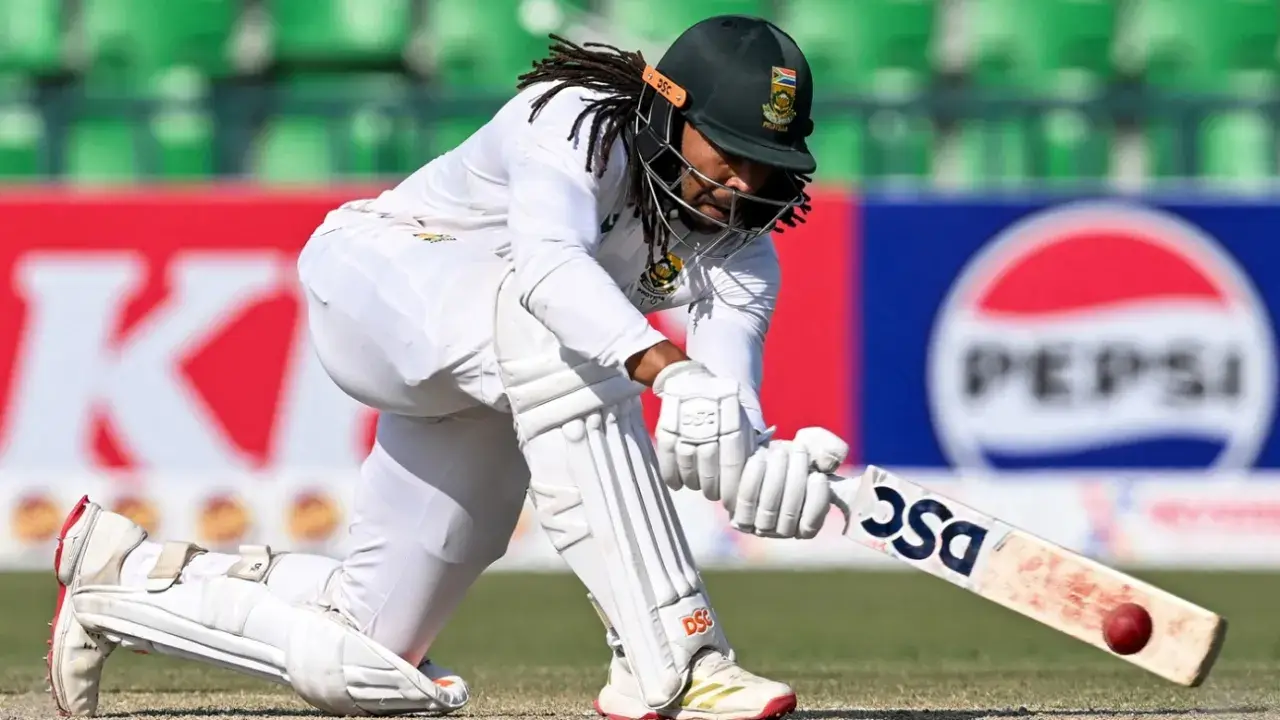The upcoming India vs South Africa Test in Guwahati will make rare scheduling history. The BCCI has decided that players will take tea before lunch. This unusual order aims to counter the fast-fading light in northeast India. Early sunsets in Assam force play to end sooner than other venues.
The match begins November twenty-second and marks Guwahati’s first-ever Test. To manage daylight, play will start half an hour earlier at nine am. The toss will take place at eight thirty, followed by the morning session. Lunch will be taken later than usual, between one twenty and two pm.
BCCI secretary Devajit Saikia said the change is purely practical for players. He explained that sunset around four pm makes late sessions impossible to complete. Guwahati’s winter daylight is shorter than most Indian cities this time of year. To compensate, sessions have been structured to fit safe playing conditions.
This innovative scheduling follows Guwahati’s successful hosting of the Women’s ODI World Cup. That event proved the venue’s readiness for major international matches. Now, India prepares for a full five-day red-ball contest under new conditions. The unique timing experiment also highlights the sport’s adaptability and player welfare focus.
India Adjusts Test Timings To Match Northeast Light Conditions
Cricket administrators often tweak rules to suit local conditions and climate. This time, the BCCI has adapted match timings instead of altering playing formats. The decision comes after assessing Guwahati’s early sunrise and early sunset patterns. Morning sessions will now begin thirty minutes before the usual start time.
Normally, Tests in India begin at nine thirty, with lunch before tea breaks. In Guwahati, players will break for tea after the first session ends at eleven. Lunch follows an hour later to align with comfort and routine adjustments. It’s a reversal of the traditional order rarely seen in a day Test.
Saikia explained the logic clearly while speaking to local media outlets recently. “By four pm, light fades fast here, making play unsafe and uneven,” he said. “So, it’s better to start early and finish safely under natural light.” His statement reflects a player-first approach that’s often overlooked in scheduling debates.
The ACA Stadium has proven its ability to host large-scale matches comfortably. During the Women’s World Cup, crowd turnout crossed twenty-two thousand spectators easily. This Test will continue that tradition, now with conditions customized for safety. The format change symbolizes a thoughtful balance between tradition and practicality for cricket fans.
How The New Timings Will Work In Guwahati?
The Guwahati Test will operate on a unique three-session schedule. The toss is scheduled for 8:30 am, with play starting sharply at 9:00 am. The first session will last until 11:00 am before the tea break begins. A short twenty-minute tea interval will help players reset before lunch later.
Lunch will follow between 1:20 and 2:00 pm depending on over rates. The final session is set to end at 4:00 pm, extendable by thirty minutes. If fading light reduces visibility, play may still conclude earlier than usual. This setup ensures safety and complete use of available daylight throughout the match.
The timing innovation reflects BCCI’s attention to geographic realities and player well-being. Local officials also coordinated with broadcasters to manage morning start logistics. With sunrise around six am, players will enjoy good natural visibility from ball one. This rare schedule tweak offers a fascinating look at cricket’s flexibility under real-world limits.
South Africa’s Newcomers Face A True Subcontinental Test
While India adapts to early sunsets, South Africa faces a tougher cricketing dawn. Eight of their current Test squad members have never played in India before. The subcontinent’s spin-friendly conditions often challenge even the most experienced visiting players. Patience, technique, and adaptability will decide who thrives and who struggles here.
Ryan Rickelton arrives fresh from a strong IPL showing earlier this year. He has worked hard to improve discipline in red-ball cricket after short stays in Bangladesh. Tony de Zorzi is another key batter known for his ability to read spin well. His recent century in Lahore underlines the composure needed on these pitches.
Dewald Brevis, long hailed as South Africa’s next superstar, adds raw attacking flair. His recent performances reveal an ability to change matches within a session. Tristan Stubbs will be another player to watch as he fights for a top-order spot. Stubbs’ form in the Rawalpindi Test showed glimpses of his long-format capability.
For the bowlers, Marco Jansen and Corbin Bosch bring pace and bounce advantages. Jansen’s left-arm angle can still trouble batters even on low, dry Indian tracks. Wiaan Mulder adds depth as an all-rounder with past experience in Indian conditions. Their adjustment to pitch behavior and match tempo will define South Africa’s campaign.
Adapting To Indian Conditions: The Key For Newcomers
Success in India starts with patient batting and slow rhythm understanding. South Africa’s young batters must trust defense and rotate strike consistently. Footwork against spin remains vital for maintaining balance and avoiding pressure traps. Early confidence from nets and practice matches will shape their Test readiness.
Bowling units must shift focus from raw pace to sustained accuracy and patience. Reverse swing opportunities will emerge only through consistent discipline in longer spells. Captains need clear plans for using pace bowlers during early sessions strategically. Left-arm and wrist spinners could play massive supporting roles throughout this series.
Mental adaptation may prove as crucial as technical preparation this time. With crowds, heat, and turn in play, composure is everything on such tours. Players should rely on senior experience and stick to pre-series training frameworks. Winning sessions consistently, not individual moments, will determine who conquers Indian challenges.
Why These Changes And Selections Matter For Both Teams?
This series holds meaning far beyond match results or statistical achievements. For India, Guwahati’s timing adjustment represents progress in match management innovation. It shows sensitivity toward regional challenges while promoting equal player comfort nationwide. For South Africa, this series becomes an examination of rebuild depth and discipline.
BCCI’s decision balances player welfare with maintaining global broadcast standards carefully. It could serve as a model for other regions with extreme daylight variations. The early start time challenges teams to prepare mentally for sharper morning movement. Such tweaks subtly reshape strategies, influencing bowling spells and top-order approaches.
For South Africa, adapting quickly will test their patience and preparation depth. The lineup includes fresh talent with growing reputations and varying levels of subcontinent experience. If they settle early, the visitors could upset predictions and surprise India. But misreading conditions or failing to adjust may widen the learning gap instantly.
Both sides understand that this series may shape reputations and team futures. The logistical changes off the field mirror the tactical transitions on it. Combined, they make this Guwahati Test one of the most intriguing events of 2025. Fans can expect skill, adaptation, and fierce competition from both camps under new conditions.
Conclusion
The Guwahati Test stands as a reflection of modern cricket’s adaptability. The BCCI’s timing change merges practicality, player safety, and viewer experience smoothly. Early starts and shifted breaks reflect a proactive, data-based scheduling philosophy today. With local daylight limitations, the new structure ensures balanced sessions for both sides.
Meanwhile, South Africa’s newcomers step into one of cricket’s hardest proving grounds. Adapting to Indian conditions will challenge their technique, temperament, and stamina equally. The subcontinent’s pitches punish impatience but reward mental clarity and discipline. Those who adapt quickly could secure permanent spots and redefine team structure.
India’s early scheduling change might also influence how future Tests are planned. Regional adjustments can enhance fairness, safety, and sporting integrity for all players. For now, fans await history as Guwahati prepares for its first-ever Test match. The new timing plan and South Africa’s evolving lineup promise an absorbing contest ahead.
















